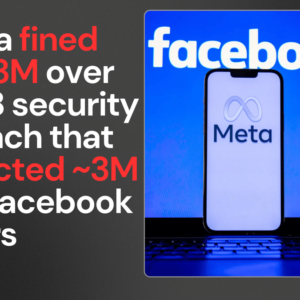Hey there, website owner! 🌐 In today’s digital landscape, ensuring your website’s security is more crucial than ever. With hackers constantly evolving their techniques, understanding how they operate can empower you to protect your site effectively. Let’s dive into some common hacking methods and how you can safeguard your online presence!
Common Hacking Techniques
Hackers use a variety of methods to breach websites. Here are some of the most common techniques:
- SQL Injection: This occurs when attackers exploit vulnerabilities in a website’s database by injecting malicious SQL queries. If your site doesn’t properly sanitize user inputs, hackers can gain unauthorized access to sensitive data.
- Cross-Site Scripting (XSS): In XSS attacks, malicious scripts are injected into web pages viewed by users. When unsuspecting users interact with these pages, the scripts can steal cookies or session tokens, allowing hackers to impersonate them.
- Phishing Attacks: Hackers often trick users into providing sensitive information through deceptive emails and websites. They create fake login pages that look legitimate, luring users to enter their credentials.
- Brute Force Attacks: This method involves using automated tools to guess passwords repeatedly until the correct one is found. Weak passwords make this technique particularly effective.
Real-Life Examples
To make this topic more relatable, let’s look at some notable instances of website hacks:
- Yahoo Data Breach: In 2013, Yahoo suffered a massive data breach affecting over 3 billion accounts. The attackers exploited weak security measures and outdated software. Regular updates and stronger password policies could have mitigated this risk.
- Target’s Payment Data Breach: In 2013, hackers gained access to Target’s network through a third-party vendor. They exploited vulnerabilities in the vendor’s systems to steal credit card information from millions of customers. Implementing strict vendor security protocols could have prevented this breach.
Signs Your Website Is Compromised
How can you tell if your website has been hacked? Look out for these indicators:
- Unusual Traffic Spikes: A sudden increase in traffic may indicate that your site is being targeted or used for malicious purposes.
- Defaced Pages: If you notice changes in your website’s appearance or content that you didn’t make, it’s a sign of a potential hack.
- Unexpected Changes in Content: If your content has been altered without your consent, it’s time to investigate further.

Preventive Measures
Protecting your website requires proactive measures. Here are some practical tips:
- Regularly Update Software and Plugins: Keeping everything up-to-date ensures that any known vulnerabilities are patched.
- Use Strong, Unique Passwords: Implementing strong passwords and changing them regularly can significantly reduce the risk of brute force attacks. Consider using a password manager for added security.
- Implement Two-Factor Authentication (2FA): Adding an extra layer of security makes it harder for hackers to gain access even if they have your password.
- Employ Firewalls and Security Plugins: Firewalls can block malicious traffic, while security plugins help monitor and protect against threats.
- Conduct Regular Security Audits: Regularly review your website’s security measures and conduct vulnerability assessments to identify potential weaknesses.
What to Do If Hacked
If you find yourself in the unfortunate situation of having your website hacked, follow these steps:
- Isolate the Affected Site: If possible, take the compromised site offline to prevent further damage.
- Change Passwords and Access Credentials: Immediately update all passwords associated with the site, including database and hosting accounts.
- Restore from Backups: If you have recent backups, restore your site to its last known good state.
- Investigate the Breach: Determine how the hack occurred and take steps to fix vulnerabilities before bringing the site back online.
Conclusion
While hackers are always evolving their tactics, taking proactive measures can significantly reduce the risk of attacks on your website. By understanding common hacking techniques and implementing robust security practices, you can protect your online presence effectively. Remember, staying informed and vigilant is key! For more in-depth information on securing your website, check out resources from OWASP and CISA.












